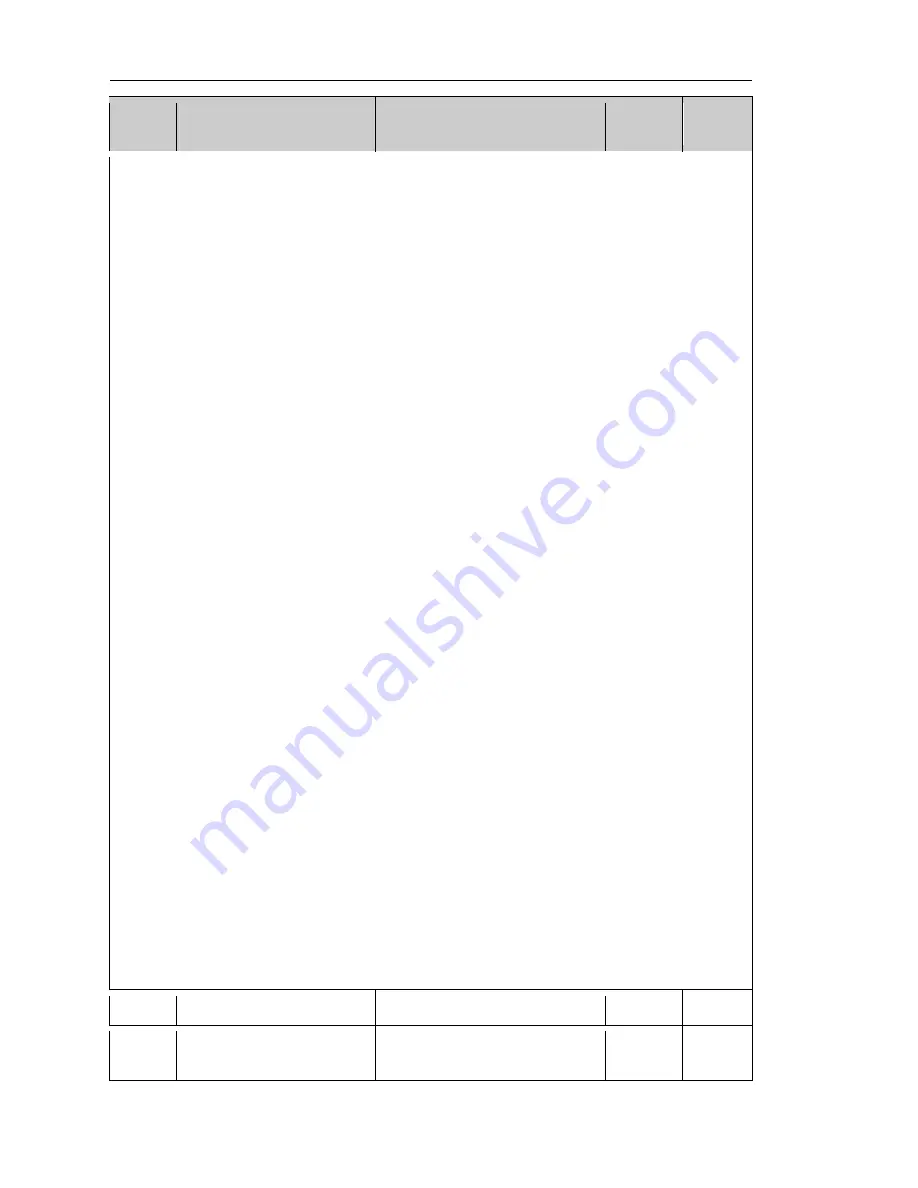
Chapter 5 Function parameter
82
Code
Parameter name
Setting range
Factory
default
Change
Proportional gain (KP) : used to decide the extent of the PID regulator,the greater P,the
greater adjusting extent. This parameter 100 means that when the deviation of PID feedback value
and setting value is 100%, the PID regulator will adjust the output frequency command to the
maximum output frequency (Ignore the integral and differential actions) .
Integration time (Ti) : used to decide the speed that PID regulator adjusts integrally the
deviation between feedbacks and settings of PID. The integration time means that when the
deviation of PID feedback value and setting value is 100%, the integration regulator (Ignore
proportional and derivative actions) will successively adjust to the maximum o utput frequency
(F0.08) for the time. The shorter integration time, the greater extent of integral adjustment
Differential time (Td) : used to decide the extent that PID regulator adjusts the deviation
between feedbacks and settings of PID. The differential time means that the feedback value
changes 100% within the time, the differential regulator will adjust to the maximum output
frequency (F0.08) (Ignore proportional and integral action) . The longer differential time, the
greater extent of adjustment
PID is the most commonly used control method in the process control, and the role of its
each part varies, the working principle and the adjusting method is briefly described as follows:
Proportional adjustment (P) : When the deviation between feedback and setting exists, as for
the adjustment amount that the output is proportional to the deviation, if the deviation is constant,
then the adjustment amount will be constant too. Proportional adjustment can respond quickly to
changes in the feedback, but simply adopt proportional adjustment, which can not realize the
control without difference. The larger proportional gain, the faster the system adjustment, but if
the too large proportional gain will cause oscillation. How to adjust: firstly set integration time to
very long, and set differential time to zero, simply adopt proportional adjustment to make the
system running, then change the setting value to observe the deviation (static difference) between
feedback signal and setting amount, if the static difference changes in the direction of setting
amount (for example, when increasing setting amount, the feedback amount is always less than
setting amount after the system is stable), continue to increase the proportional gain, and vice
versa reduce the proportional gain, repeat the above process until the static difference is relatively
small (it is hard to achieve zero static difference) .
Integration time (I) : when the deviation between feedback and setting exists, the output
adjustment amount continuously increases, if the deviation persists, the adjustment amounts will
continue to increase until zero deviation. The integration regulator can effectively eliminate static
difference. If the action of integration regulator shows too strong, the overshoot occurs repeatedly,
the system shows unstable until oscillation. The oscillations caused by too strong integral action is
characterized by that the feedback signal bobs and the range of oscillation gradually increases
until the oscillation. The integration time para meter adjustment generally descend, gradually
adjust the integration time to observe the effect of system adjustment until the system reaches the
steady speed requirements.
Differential time (D) : when the deviation of feedback and setting changes, as for the
adjustment amount that the output is proportional to the deviation, the adjustment amount only
have something to do with the direction and size of deviation change, not itself direction and size.
The role of differential regulation adjusts according to the changing trends when the feedback
signal changes,thereby suppressing the changes of feedback signal. Please use differential
regulator with caution, because the differential easily amplify the interference of system,
especially the interference of high changes frequency.
E2.07 Sampling period (T)
0.01 to 100.00s
0.10s
☆
E2.08
PID control deviation
limit
0.0 to 100.0%
0.0%
☆
















































